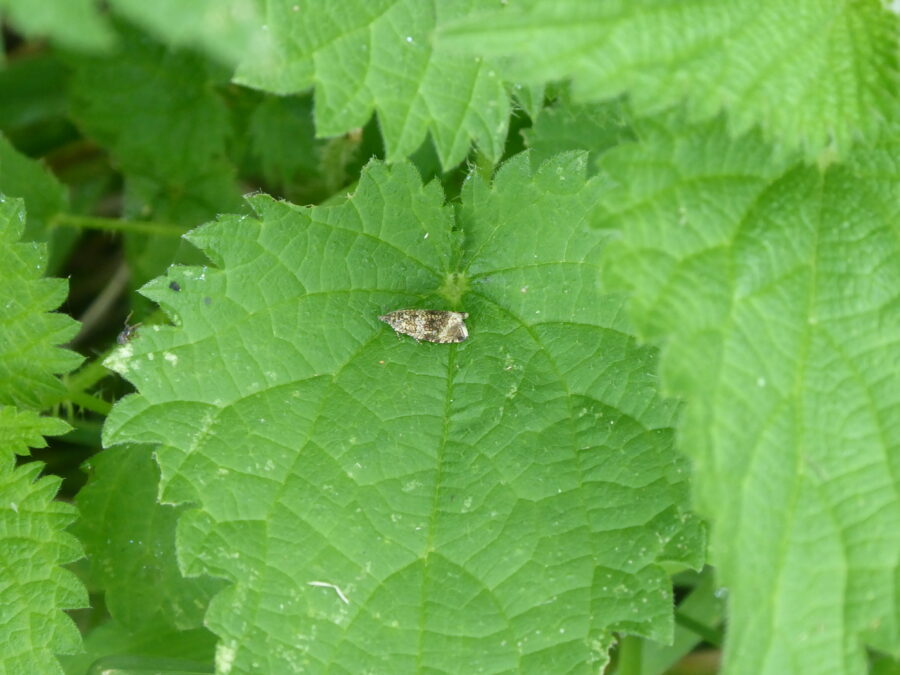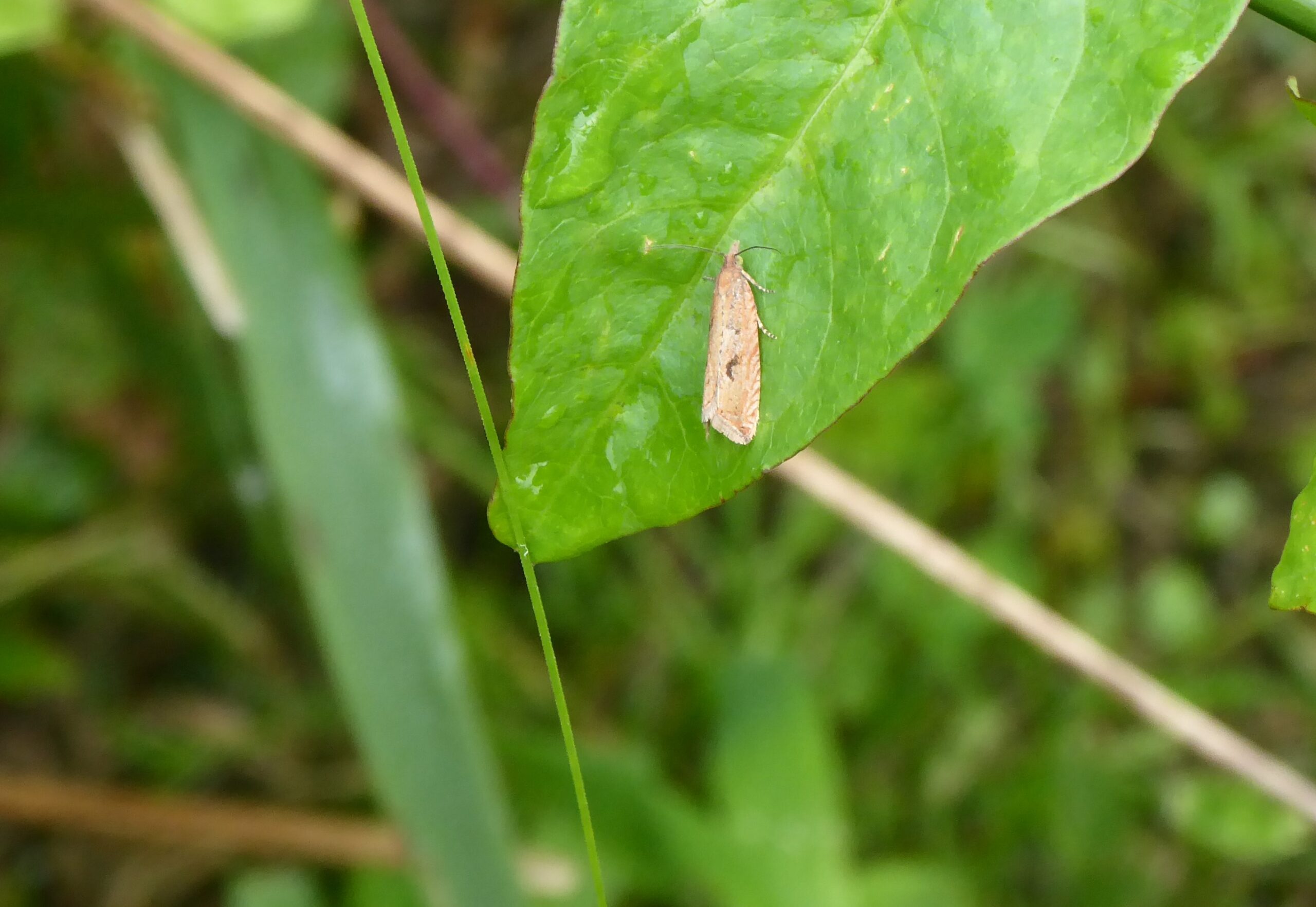I really love how collecting photos of the wildlife in our watermeadow has made me look at the detail and appreciate the beauty in some of the little creatures. Take this rush marble – I was searching for ‘wood grain moths with stripey legs’ and of course I got nowhere. But just look at the wing borders with the wood grain patterning. It’s so delicate, and yet, so easy to overlook.
I had already identified the common marble moth below and noticed that the fringing on the wings and the general shape were similar, so I looked up ‘marble moths’ and discovered the whole range. I was able to pick out the lovely tan colour, ‘wood grain’ stripes and the dark ‘kidney’ markings.

As previously mentioned there are a number of tweedy looking black and white moths, which are in the Tortrix family. I identified this one as a dark strawberry tortrix, or common marble, by looking at the pattern and the striped legs. The pattern has a white fringe with a slim black border stripes running in diagonal swathes across the wings with a broad dark band between two paler bands and narrower stripes in the wing margins. Apparently these black and white marbled moths are supposed to resemble bird droppings!
The moth likes grasslands, hedges, and woodland fringe and flies May to August. There are a great many moths in the Tortrix family, and most seem to be viewed as pests. The word tortrix is Latin for ‘twister’ and refers to the way in which the caterpillars roll up leaves to make their cocoons.
